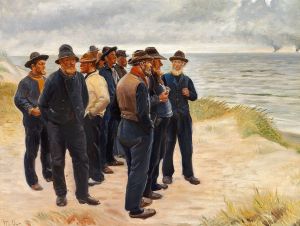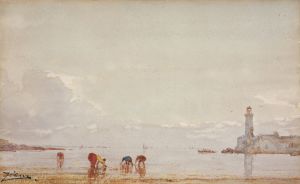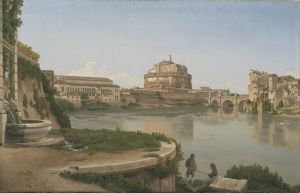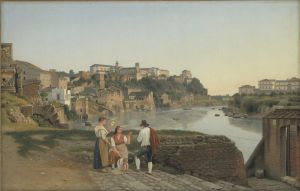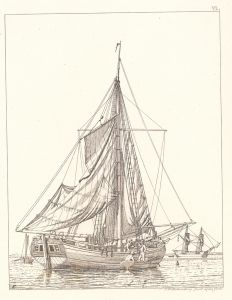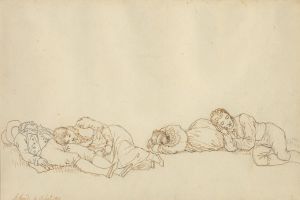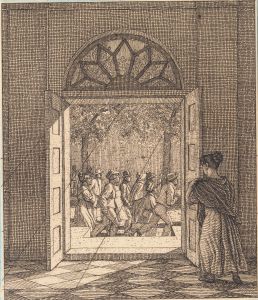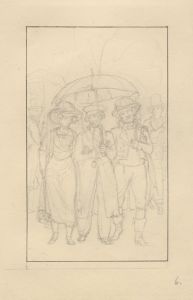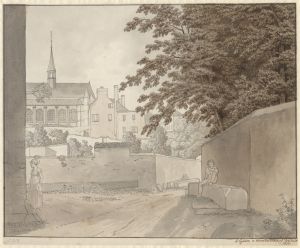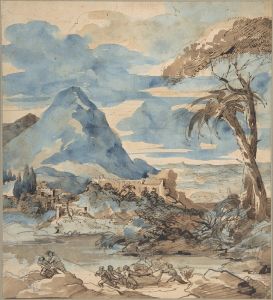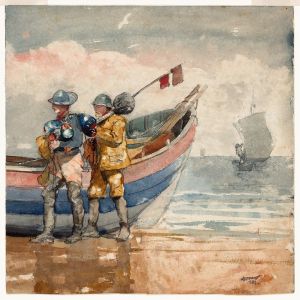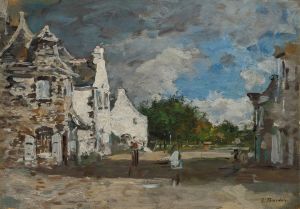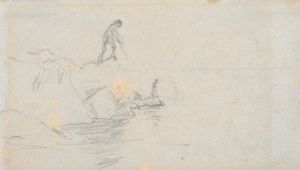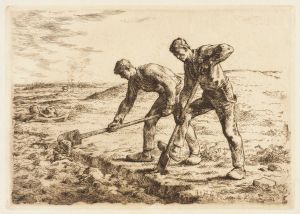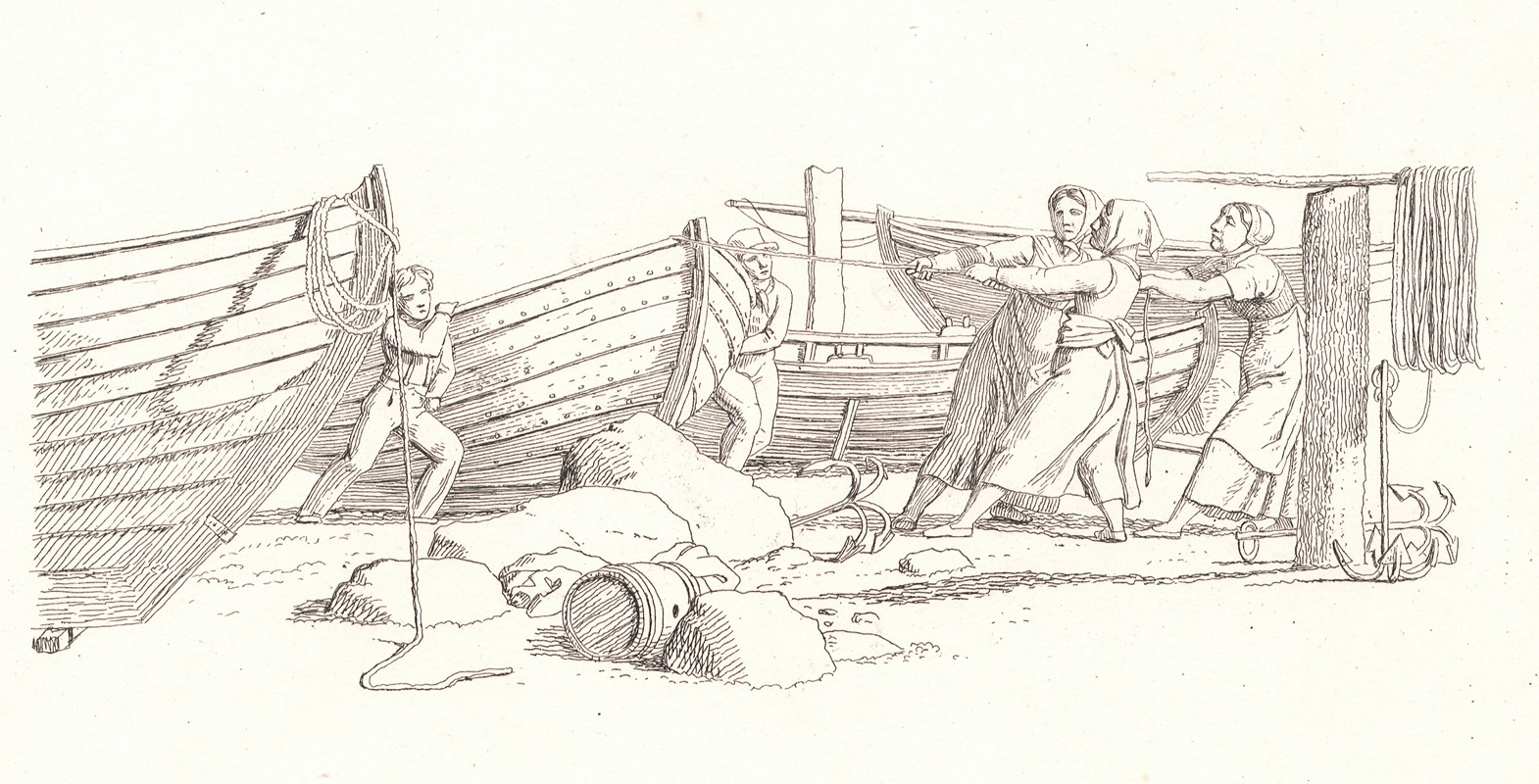
Parti ved et fiskerleje Både hales på land
A hand-painted replica of Christoffer Wilhelm Eckersberg’s masterpiece Parti ved et fiskerleje Både hales på land, meticulously crafted by professional artists to capture the true essence of the original. Each piece is created with museum-quality canvas and rare mineral pigments, carefully painted by experienced artists with delicate brushstrokes and rich, layered colors to perfectly recreate the texture of the original artwork. Unlike machine-printed reproductions, this hand-painted version brings the painting to life, infused with the artist’s emotions and skill in every stroke. Whether for personal collection or home decoration, it instantly elevates the artistic atmosphere of any space.
Christoffer Wilhelm Eckersberg, often referred to as the "father of Danish painting," was a pivotal figure in the development of Danish art in the 19th century. His work, "Parti ved et fiskerleje. Både hales på land," which translates to "View of a Fishing Village. Boats Pulled Ashore," is a fine example of his contribution to the Danish Golden Age of painting. This period was marked by a flourishing of the arts in Denmark, with Eckersberg playing a central role in its development.
Eckersberg was born in 1783 in Blåkrog, Denmark, and he studied at the Royal Danish Academy of Fine Arts in Copenhagen. He further honed his skills in Paris under the tutelage of Jacques-Louis David, a leading French neoclassical painter. Eckersberg's exposure to David's style and the broader European art scene significantly influenced his artistic approach, which combined neoclassical precision with a keen observation of nature.
"Parti ved et fiskerleje. Både hales på land" is an exemplary work that showcases Eckersberg's meticulous attention to detail and his ability to capture the serene beauty of everyday life. The painting depicts a tranquil scene at a fishing village, where boats are being pulled ashore. This subject matter reflects Eckersberg's interest in maritime themes, a common motif in his oeuvre, likely inspired by Denmark's extensive coastline and maritime heritage.
The composition of the painting is carefully balanced, with a harmonious interplay between the natural landscape and human activity. Eckersberg's use of light and shadow is particularly noteworthy, as it enhances the realism of the scene and imbues it with a sense of calm and order. The artist's precise brushwork and the clarity of his forms are characteristic of his style, which often emphasized clarity and structure.
Eckersberg's work is also noted for its emphasis on perspective and proportion, skills he mastered and later taught to his students at the Royal Danish Academy of Fine Arts, where he became a professor in 1818. His teachings and works greatly influenced a generation of Danish artists, including notable figures such as Wilhelm Bendz and Christen Købke.
"Parti ved et fiskerleje. Både hales på land" is a testament to Eckersberg's ability to elevate simple, everyday scenes into works of art that capture the essence of Danish life and landscape. His paintings often reflect a deep appreciation for the natural world and a commitment to portraying it with honesty and precision.
Eckersberg's legacy is significant, as he laid the groundwork for what would become a distinctive Danish style of painting. His influence extended beyond his lifetime, as his students carried forward his techniques and ideals, contributing to the rich tapestry of Danish art history.
Today, Eckersberg's works, including "Parti ved et fiskerleje. Både hales på land," are celebrated for their technical excellence and their role in shaping the course of Danish art. They are housed in various collections, including the National Gallery of Denmark, where they continue to be appreciated by art enthusiasts and scholars alike.





